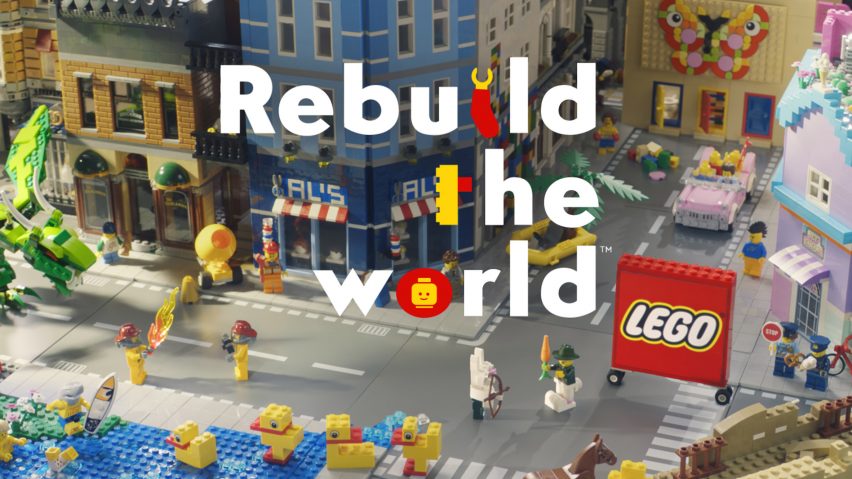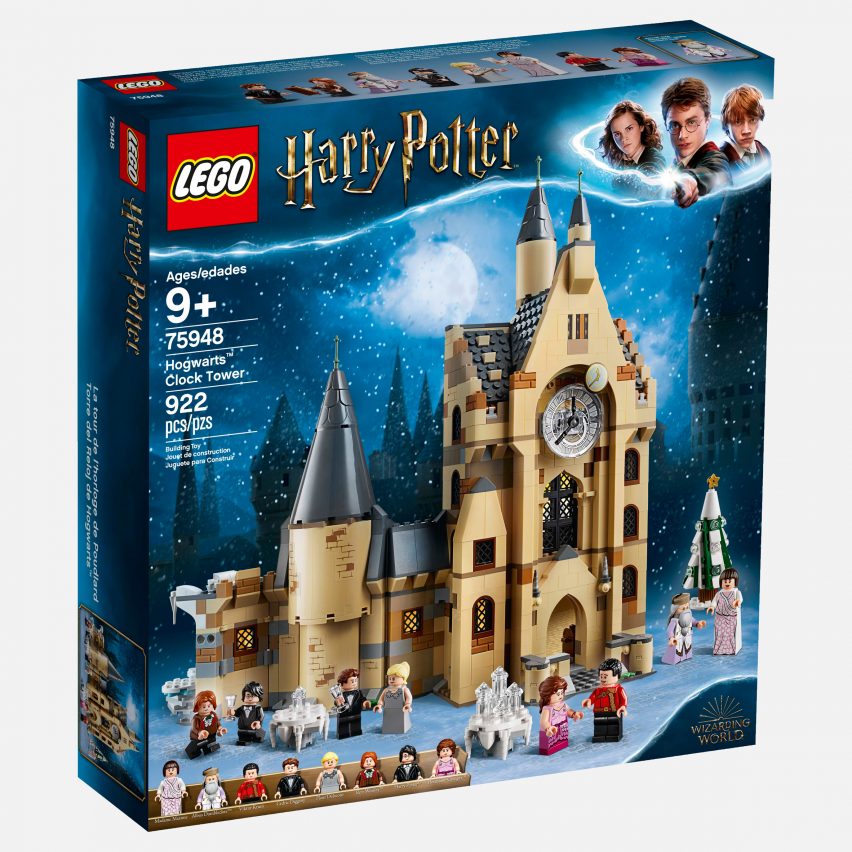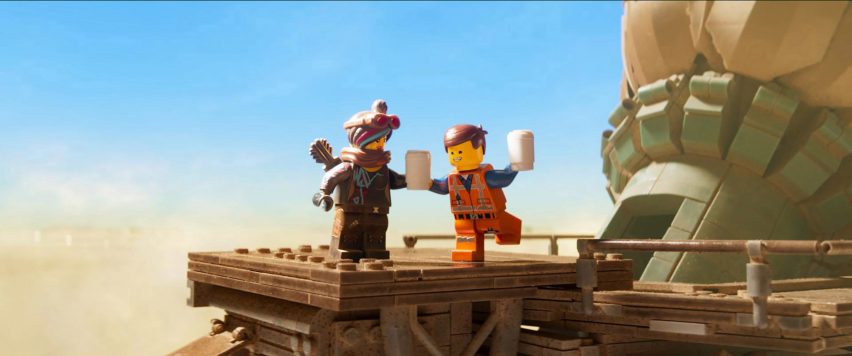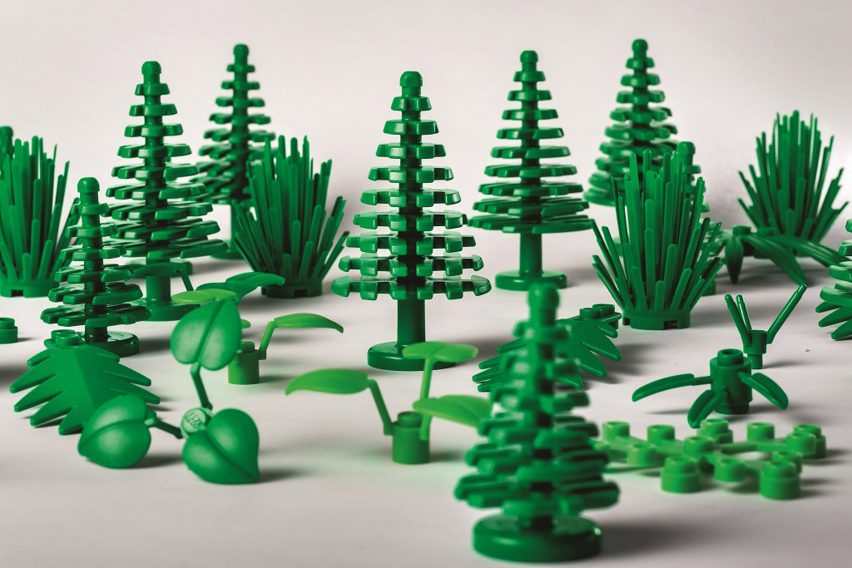Creativity is being "brushed aside" by digital media says Lego's head of design
As Lego launches its Rebuild the World campaign, Matthew Ashton, the toy company's VP of design, explains how it is embracing digital technology and licensing agreements to encourage children to play.
Lego has become the world's largest toy manufacturer by selling plastic bricks, but with the future of physical toys under threat from digital alternatives Ashton believes that children's creativity is suffering.
"Creativity is not given the attention it needs right now," said Ashton. "When I was a kid there were only four TV channels and only two you wanted to watch. You made the most of everything you had around you – and of course you had great toys as well."
Earlier this month the toy manufacturer launched a campaign titled Rebuild the World to encourage children to play and develop creative skills.
"Now there are so many activities through school and after school, and so much media to consume, that maybe playing and creativity is being brushed aside and we want to put that in the forefront," explained Ashton.

Along with the campaign, Lego has been adapting its products to encourage children to physically engage with toys in an increasingly competitive market.
"With the products we are designing, we are always going to innovate to make sure we are bringing in new experiences and change the way we do things," continued Ashton.
"If Lego bricks and the Lego products were still the same as in the 80s, we would not be as relevant now."
Lego trying to balance free-playing with instructions
Although Ashton acknowledges that some Lego traditionalists may want the company to only produce bricks and not instruction-led sets, he believes that instructions have an important part to play in developing creativity.
"It had been a preconception of Lego that it had become very instruction focused and that every kit was a one-time solution. Yes, that is a starting point for a lot that we do, but the portfolio also has the buckets of bricks," said Ashton.
"It is also about balance. Some kids can just dive into a box of Lego and just start sticking things together, while other kids can be really intimidated by it and need instructions and need help and need guidance."

As part of the drive to engage children, Lego has continued its policy of partnering with major film franchises, something that it has also been criticised for.
"Its really important for us to hit into kids passion points and all the things that inspire them. That's one of the reasons we do licensing," he explained.
"The brick is always going to have its place"
Lego is also developing toys that combine its bricks with "digital experiences", like coding and AR, to encourage children to play with physical toys.
"Time on an app is time away from the toy box, so of course that is why we are trying to find solutions that fulfil that need kids have for digital experiences, but always tie it back to doing something physical," said Ashton.
However, he doesn't think that Lego will be abandoning the brick anytime soon.
"I think the brick is always going to have its place as it gives kids the chance to create a physical manifestation of whatever is going on in their head. This really instils a sense of pride."
Read on for the full interview with Ashton:
Tom Ravenscroft: Beyond selling toys, what is purpose of the Rebuild the World campaign?
Matthew Ashton: We are trying to encourage kids to be as creative as they possibly can be and for us to help create the space to give them the tools and the creative confidence to build that creativity. If you look at jobs in the future, 65 per cent of the jobs 20 years from now, we don't even know what they are, and they don't even exist yet.
To prepare kids for that, play and being creative helps them develop problem solving skills, communication skills, and resilience for tying things out, them not working and giving it another shot. That's what this is all about.
Tom Ravenscroft: The slogan is Rebuild the World. Is this because levels of creativity are in decline?
Matthew Ashton: If you ask the majority of adults if they see themselves as creatives they well say "no", even though they may be doing creative things through the day that they don't even realise. That is a real shame because as a child your eyes are open to any possibility in the world. You are really imaginative and daring. All of those things get chipped away at a little bit though life.
Tom Ravenscroft: But is it time for change?
Matthew Ashton: Creativity is not given the attention it needs right now. When I was a kid there were only four TV channels and only two you wanted to watch. You made the most of everything you had around you – and of course you had great toys and everything as well. Whereas now there are so many activities through school and after school, and so much media to consume, that maybe playing and creativity is being brushed aside and we want to put that in the forefront.
Tom Ravenscroft: And is that just for playsake?
Matthew Ashton: No. Although that might sound like it is coming from us as a toy company, but there is a lot of research that shows how important play is. It is important to try things out and do things differently. Of course, going through school you are told to do things in a certain way – with play kids are in a different headspace.
Tom Ravenscroft: So play is good for kids for the future, but also good for the present?
Matthew Ashton: Yes, and adults could learn to be a bit more playful and not get too hung up on things. We want to encourage them to have creative freedom, but then to also loosen up and see the fun in things. Its OK to be silly, its OK to try things out.
Tom Ravenscroft: What ways are Lego actually encouraging creativity – beyond just making and selling toys? Are you actively changing the designs?
Matthew Ashton: With the products we are designing we are always going to innovate to make sure we are bringing in new experiences and change the way we do things. If Lego bricks and the Lego products were still the same as the 80s we would not be as relevant now.
It's really important for us to hit into kids passion points and all the things that inspire them. That's one of the reasons we do licensing. A kid may never look at a lego brick and think: "Oh, I want to have a go at that". But if they are so obsessed with Star Wars or Harry Potter then you can give them a little taste and they may be really proud of what they make.

Tom Ravenscroft: And does Lego get criticism for its branded products from people who want Lego to only produce red, green and yellow bricks, rather than kits with instructions.
Matthew Ashton: It is also about balance. Some kids can just dive into a box of Lego and just start sticking things together, while other kids can be really intimidated by it and need instructions and need help and need guidance. It is kind of like when you are learning to cook, you don't just get a load of vegetables, and immediately know what to do.
Part of the instructions are a training ground to learn the sort of techniques and things that you need to then go off and create your own thing.
Tom Ravenscroft: Is that the entire plot of the first Lego movie?
Matthew Ashton: Exactly.
Tom Ravenscroft: And you were involved in that movie?
Matthew Ashton: Yes, I was an executive producer on both the Lego movies and the Lego Batman movie.
Tom Ravenscroft: How much were the Lego movies created to get across this message – that people didn't always need to follow instructions and could break out of the box?
Matthew Ashton: It was a very conscious choice. It had been a preconception of Lego that it had become very instruction focused and that every kit was a one-time solution. Yes that is a starting point for a lot that we do, but the portfolio also has the buckets of bricks. It was changing that perception in people's minds. But that was kind of secondary to the emotional story we wanted to tell of a father and son playing together and for adults not to be to rigid about things.

Tom Ravenscroft: Did that happen after you reduced the number of types of bricks?
Matthew Ashton: That happened much earlier. When I started – I don't know the exact numbers, but a large number went down to a smaller number. With any creative process having some limitations around it makes you work harder and find a better solution. If you can do whatever you don't necessarily get the best results.
Tom Ravenscroft: So you think it is important to have creative boundaries?
Matthew Ashton: Yes and honestly back then I was like: "What are these elements even meant to be?" And some of us didn't know how they were supposed to go together. A big clean up was necessary. What we do now with the majority of our sets is make sure that the core bricks are in there. We tend to only use the more specialised parts if they are bringing the licence to life – like when you want characters to be authentic you have to have all the wigs and accessories to make those characters look like who they are suppose to be.
Tom Ravenscroft: Is it a conscious effort not to let the numbers of brick types balloon again?
Matthew Ashton: Yes. We have pruning process every year, where we say we are bringing this many new elements in a certain percentage needs to go out as well. And that is more the character specific stuff.
Tom Ravenscroft: Physical toys and the digital world? Does Lego see that as a battle?
Matthew Ashton: We are trying to embrace it. Obviously there are some amazing apps and digital experiences out there that are equally as creative as some of the stuff we do, just in a different way. If you don't move with technology and embrace it you will be left behind, so we are looking at ways to marry digital experiences with physical products that enhance the overall proposition and introduce new ways to play.
We have things like the Boost set, with Star Wars droids that you can code. We have also just released hiden side – which is a spooky, haunted house theme, where you can build the physical product, but then using an app ghosts and things come to life. Its an AR experience, you can capture ghosts and add to the storytelling. It takes the physical toy to the the next level.
Tom Ravenscroft: So is Lego planning to jump ship on the brick completely.
Matthew Ashton: No. I think the brick is always going to have its place as it gives kids the chance to create a physical manifestation of whatever is going on in their head. This really instals a sense of pride – I've dreamt this up and now I have made it – its something they can be proud to show their parents or friends. Ten smash it up and build something else.

Tom Ravenscroft: Is the emergence of digital a threat to the company, and the idea of kids playing with toys?
Matthew Ashton: It does absorb a lot of kids time and space, and obviously time on an app is time away from the toy box, so of course that is why we are trying to find solutions that fulfil that need kids have for digital experiences, but always tie it back to doing something physical. We are probably one of the few companies that can do both in way.
Tom Ravenscroft: Is this quite a responsibility? And for the brand?
Matthew Ashton: There is a weight on my shoulders. Any brand this big, everyone has got an opinion on what you should and shouldn't be doing, and how things should be. Of course we want to take all that feedback on board and learn from it.
Tom Ravenscroft: As a toy, Lego is entirely known for being plastic bricks, but attitudes to plastic are rapidly changing. What is Lego's plan?
Matthew Ashton: We have a got a division that has been set up completely dedicated to making bricks from new types of materials – like plant-based materials. It is a constant focus for us.
From a renewable energy point of view, all our energy comes from the wind farms we created. A lot of thought and work is being put into finding our exactly how we move forward. Its something that we know we need to do and we want to do.